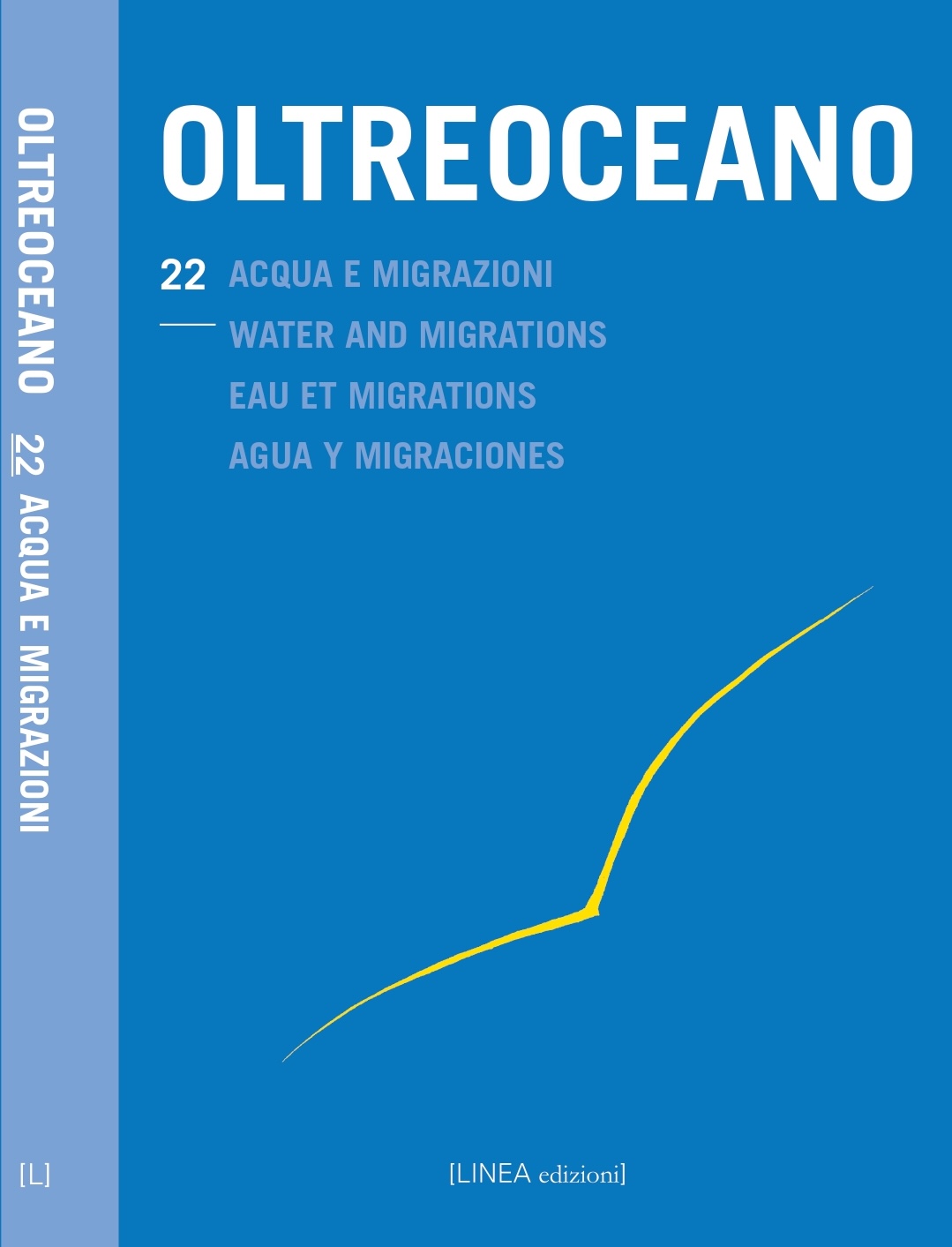Water in Paraguay: between life, death and possible rebirth
DOI:
https://doi.org/10.53154/Oltroceano89Keywords:
Exile, Drought, Chaco War, Rivers of ParaguayAbstract
Over the centuries Paraguay has established a conflictual and indissoluble relationship with its two main rivers, the Paraguay River, which divides the country in two regions, and the Paraná, which marks its eastern border. Both these impressive rivers have, indeed, played a crucial role in the life and development of the country: they have been not only privileged access routes for the conquistadores and the immigrants, sites of bloody commercial and political clashes, and painful routes to exile for the opponents of various regimes, but also sources of livelihood and profit as well as agents of destruction during floods. At times, their presence was not sufficient to avoid frequent periods of drought, which fueled conflicts, such as the well-known “War of Thirst” against Bolivia, fought between 1932 and 1935 in defense of the Chaco region. As Jean Andreu has aptly noted in an essay on Augusto Roa Bastos, all these aspects are tackled with in the works of Paraguayan writers. In an attempt to provide some examples of the different interpretations that writers give on the theme, this article analyses some excerpts from stories, novels and poems by well-known Paraguayan writers, like Augusto Roa Bastos, Renée Ferrer, José-Luis Appleyard and Javier Viveros, and poets like Eloy Fariña Núñez, Victorino Abente y Lago and Elvio Romero.
Downloads
References
Abente y Lago, V. (1984): Antología Poética: 1867-1926. Asunción: Litocolor.
Andreu, J. (1980): El hombre y el agua en la obra de Augusto Roa Bastos. Revista Iberoamericana, XLVI, 110-111, pp. 97-121.
Appleyard, J.L. (1991): Imágenes sin tierra. Asunción: El Lector.
Barrett, R. (1988): Obras completas I. Asunción: RP.
Cadogán, L. (1962): Aporte a la etnografía de los Guaraní del Amambai, Alto Ypané. Revista de Antropología, 10, 1-2, pp. 43-91.
Cardozo, E. (1996): El Paraguay y la Conquista. Asunción: El Lector.
Causarano, M. & Chase, B. (1978): Asunción. Análisis histórico-ambiental de su imagen urbana. Asunción: El Lector.
Dionisi, M.G. (2020): Augusto Roa Bastos, un futuro premio Cervantes al servizio del cinema. Thule, Rivista italiana di studi americanistici, 44, pp. 15-40.
Dionisi, M.G. (2022): Il caldo non scioglie la neve in fondo al cuore. Storie di “salvati”. In Giulia Nuzzo (Ed.), Sognavamo nelle notti feroci (pp. 103-149). Salerno: Officine.
Fariña Núñez, E. (1922): Cármenes. Buenos Aires: S.A. Establecimiento Gráfico Argentino.
Ferrer, R. (2003): Desde el cañadón de la memoria, 1982. In Renée Ferrer, Poesía completa hasta el año 2000 (pp. 115-132). Asunción: Arandurâ.
Ferrer, R. (2014): Se l’è portato via il fiume. In Renée Ferrer, Racconti dall’isola senza mare (pp. 33-37). Salerno: Oèdipus.
Ferrer, R. (2014): La siccità. In Renée Ferrer, Racconti dall’isola senza mare (pp. 29-32). Salerno: Oèdipus.
Ferrer de Arréllaga, R. (1986): La seca y otros cuentos. Asunción: El Lector.
Ferrer de Arréllaga, R. (1993): Por el ojo de la cerradura. Asunción: Arandurâ.
Mariotti, M. (1925): Posibilidades del desarrollo de la industra hidro-eléctrica en el Paraguay. Revista de la Sociedad Científica del Paraguay, II, 1, pp. 1-50.
Muratori, L. A. (1985): Il cristianesimo felice delle missioni de’ padri della Compagnia di Gesù nel Paraguai, 1745. Palermo: Sellerio.
Roa Bastos, A. (2007a): El trueno entre las hojas, 1953. Asunción: Servilibro.
Roa Bastos, A. (2007b): Hijo de hombre, 1960. Asunción: Servilibro.
Romero, E. (1990): Poesías Completas II. Asunción: Alcándara.
Vera, H. (2007): En busca del hueso perdido (Tratado de paraguayología). Asunción: Servilibro.
Viveros, J. (2015): Fantasmario. Cuentos de la Guerra del Chaco. Asunción: Arandurâ.
Downloads
Published
How to Cite
Issue
Section
License

This work is licensed under a Creative Commons Attribution-NonCommercial-ShareAlike 4.0 International License.
The authors undertake to comply with the following conditions, which are considered accepted at the time of submission of their contributions.
The sending of a text implies that it is unpublished and not submitted to be published elsewhere.
1. If accepted, the author shall confer on the publisher the right to publish and distribute it both in paper form and in the online electronic edition. The published articles will be downloadable and made available in open access.
2. Provided that it correctly indicates that the first publication took place in the journal Oltreoceano. Rivista sulle migrazioni the author has the right to: a) reproduce the article in separate extracts or collected in a volume; b) publish the article on their personal website or teaching site provided that these sites are of a non-commercial nature; c) deposit the article in online archives of a non-commercial nature, linked to the institution they belong to or as part of projects for the non-commercial dissemination and open access of scientific works.
The use of contributions by third parties, for commercial or otherwise unauthorized purposes, is not allowed. The publisher declines all responsibility for the unauthorized use of the material published in the journal.












